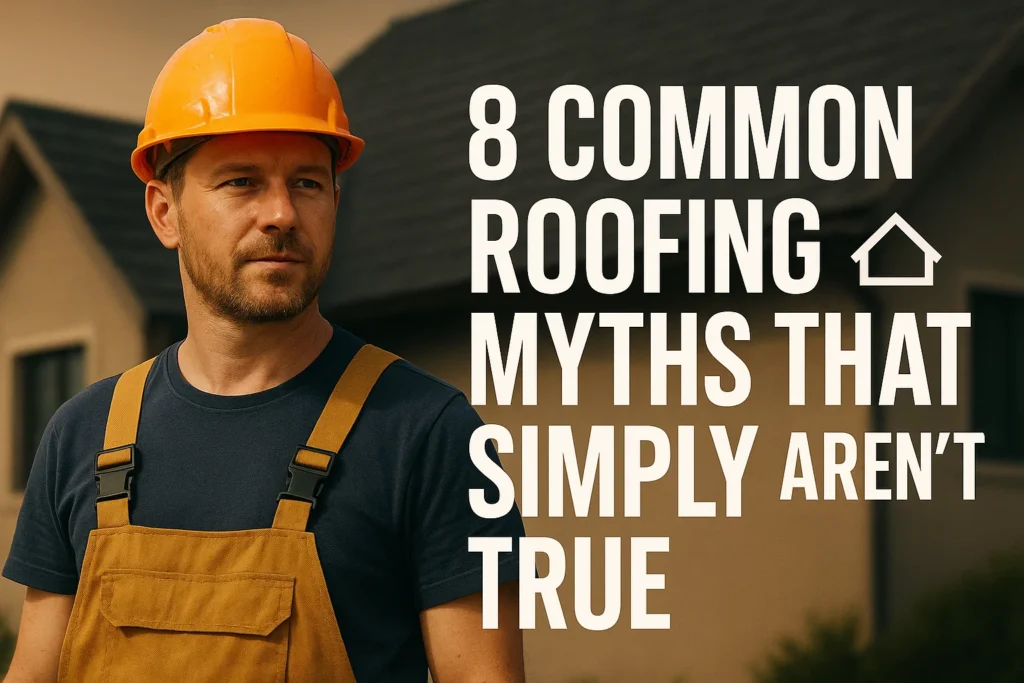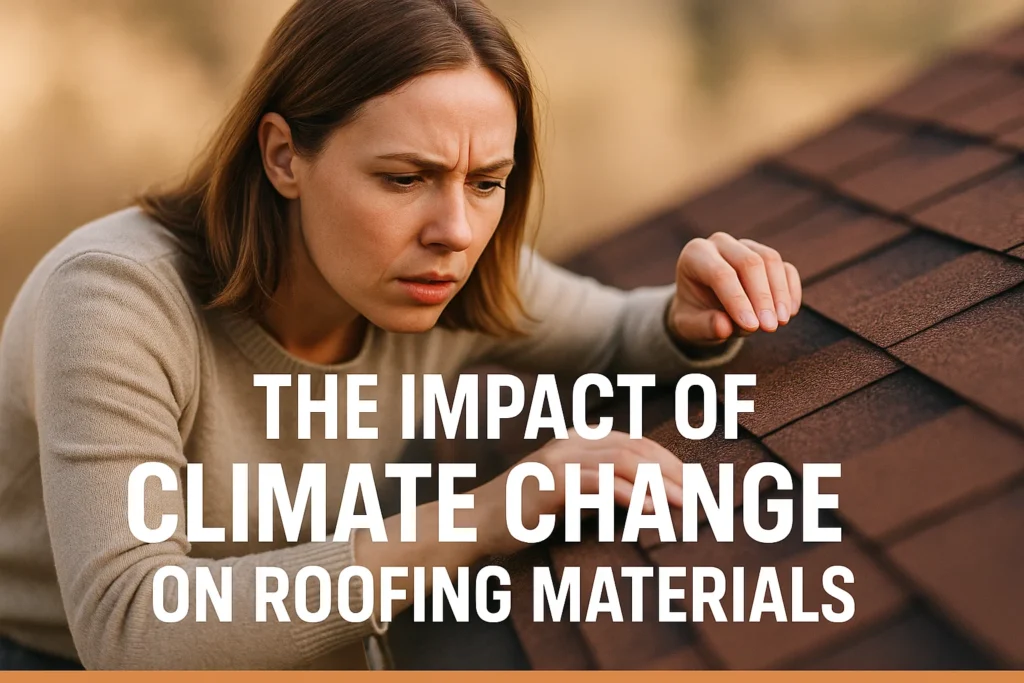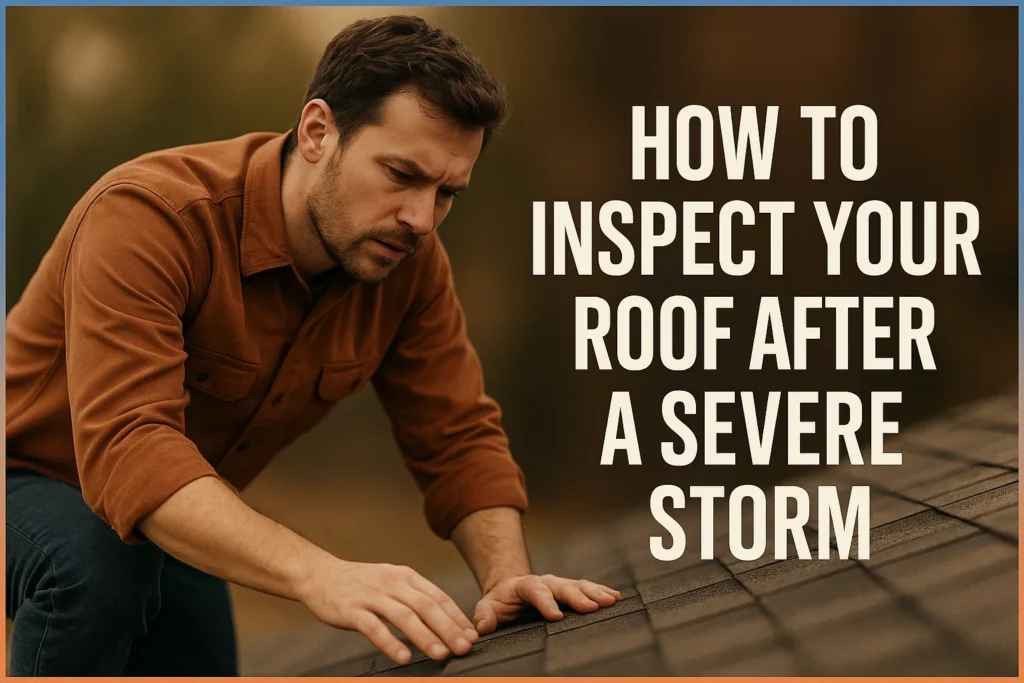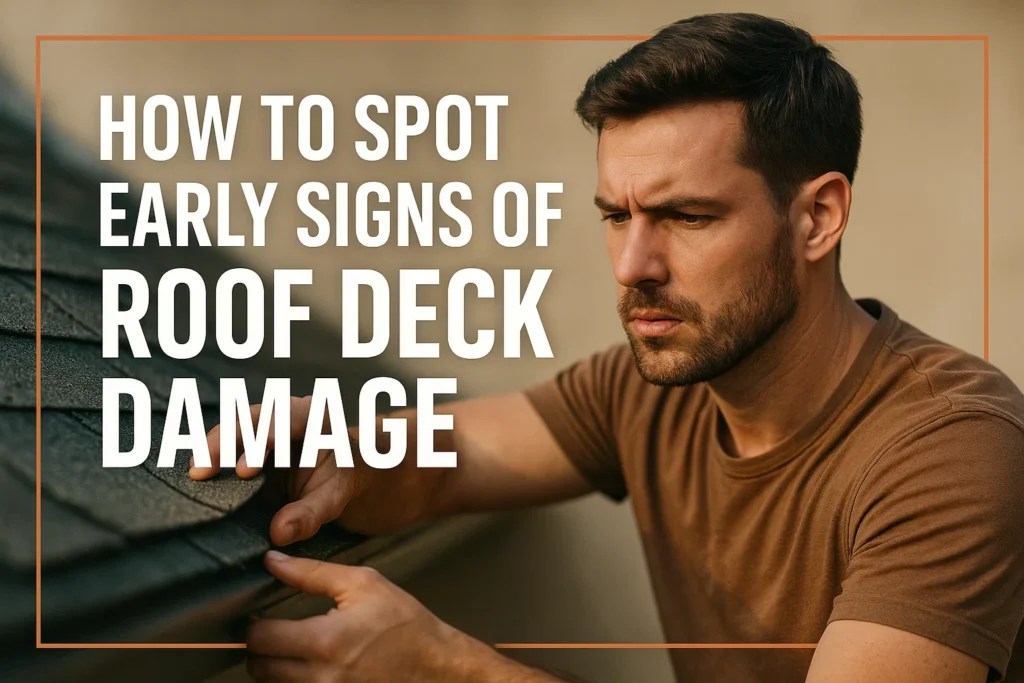Roofing is an essential aspect of a house and house maintenance, yet it is filled with misconceptions. Such misconceptions may stem from a lack of knowledge regarding modern roofing, outdated information, or even just word of mouth. These misconceptions can be quite dangerous as they may lead people to make poor decisions about repairs, maintenance, or replacements, ultimately putting their house at risk. In this blog, we’ll debunk some common myths about roofing to help people make proper decisions about their investments.
Why Misconceptions About Roofing Spread
Roofing myths start to circulate when people base their decisions on out-of-date information, or information with little knowledge, as well as advice stemming from family or friends. These ‘information’ sources do not consider the new advancements about roofing materials, the complexity of installation, or the climate relating to the house in question. Additionally, misleading advice on social media or DIY sites can impact a roof’s health. Disregarding the truth of roofing myths could lead to skipped maintenance tasks, unnecessary replacements, or dangerous repair attempts. It’s essential to verify roofing advice with professionals to protect your home and investment properly.
What Are the Common Roofing Myths That We Should Know?
A roof is an integral part of any home, shielding it from the elements and ensuring it remains dry and secure. Nevertheless, there are several prevalent myths about roofing that may confuse and mislead the homeowner. We address some of the more popular roofing myths and shed some light on the truth to ensure proper roof management.
Myth 1 – A New Roof Doesn’t Need Maintenance
There is a common myth that once a new roof is installed, it requires no further attention. This is inaccurate, as even the newest roofs need regular maintenance in order to remain in good condition. Wind is one of the most common weather conditions that causes damage, along with rain, snow, and even the sun. Also, gutters cluttered with debris, like old vines, rubbish, and even sticks, significantly contribute to and/or accelerate the damage to the roof as some components trap moisture. Identifying and fixing issues at the right time helps to avoid possible damages in the future and keeps the roof in good shape.
The proper care at the beginning and during the maintenance of the roof will ensure that the roof lasts for a very long time. Other forms of maintenance, such as washing the roof, pulling down vines, and even examining the roof for possible weak spots, broken roofs, and repairing them slightly, as well as looser seams, are just as important. Insurance for the roof, in this case, would make practical sense as the savings that would be generated in the long term are significant when the following is true: the roof is liable for one’s house.
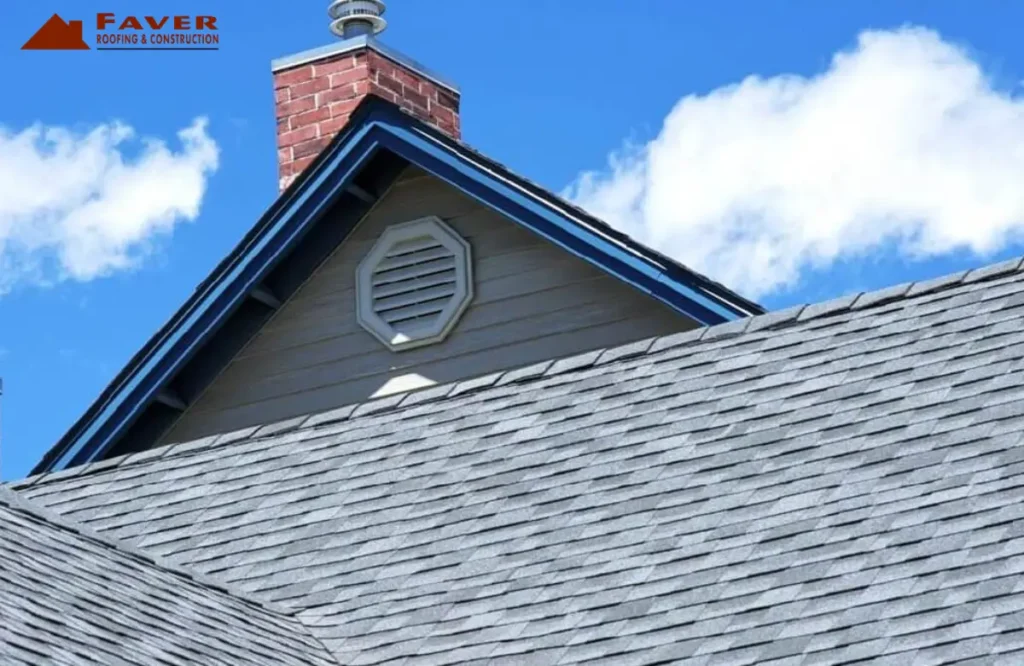
Myth 2 – All Roofing Materials Are the Same
Every material used for roofing has different ways of performance and durability. Asphalt shingles, for example, metal roofs, tiles, and the rest. They most certainly will not have the same price, require the same upkeep, and work well in the same surroundings. Much as the prices of all the shingles are manufactured in the same factory, individual shingles come in all different varieties.
- Shingles are a very simple and popular way of roofing due to their low price, low time, and low cost of installation.
- Metal roofing is of a way greater value, in looks as well as in low time to install, along with extreme energy preservation. The drawback is the high initial cost.
- Light tiles are not bad but they are on the high side and can also take much time to install while being durable.
Based on the conditions in your area, style, and the amount of money you are willing to spend, metal roofing can pay off due to the extreme cost. In bunkers and buildings situated in extreme weather conditions and at risk of fire, metal tiles work the best. In very hot and dry conditions, metal tiles excel. These conditions should be considered in the area being used for the installation to ensure the greatest durability of the metal roofs.
Myth 3 – Roof Replacement Is Always Better Than Repairs
In some cases, a full replacement of a roof might be absolutely necessary. However, several roofing issues can be tackled with selective repairs. A small leak, a few damaged shingles, or minor problems with roof flashing don’t always mean the entire roof needs to be replaced. Repairs are usually quicker, cheaper, and extend the life of the roof.
If, however, the roof is badly damaged, worn out, or has fundamental issues, then replacement can be the more prudent option. A roof with multiple damaged shingles, a sagging roofline, and roofing material well beyond its life expectancy are good indicators for replacement. A roofing professional can help assess the situation for costs and benefits in the replacement plan.
Myth 4 – You Can Install a New Roof Over an Old One
Some homeowners believe it is perfectly acceptable to put a new roof over an old roof. While in some cases, building codes might allow it, it is never best practice. New shingles are added over old shingles, which adds weight to the home structure, and also masks any existing problems such as rot or leaks. These problems can be more troublesome in the future.
Removing the old roof right down to the deck — a process known as a tear-off — allows for a new roof to be installed on a clean surface, as well as for any concealed damages to be inspected and repaired. A tear-off also improves ventilation, as well as increasing the lifespan of the roof. Though it may be more expensive to start, it is a safer and more effective option.
Myth 5 – Roofing Is a DIY-Friendly Job
Roofing is one of the most challenging and dangerous home improvements you can undertake. Roofing requires specialised tools and proper safety apparatus, and there are specific techniques that need to be employed to do the job safely and successfully. Roofing without experience can lead to a number of issues, including falls, poor installations, and future roof-related problems.
There are many things that need to be taken into account regarding roofing. Professionals undergo meticulous training, carry insurance, and have the right equipment to tackle every aspect of roofing. Not only are you guaranteed work of a certain standard, hiring a specialist also ensures that your safety is not compromised. This will eliminate expensive errors and ensure that the roof operates efficiently for a number of years.
Myth 6 – Roofs Only Fail Because of Age
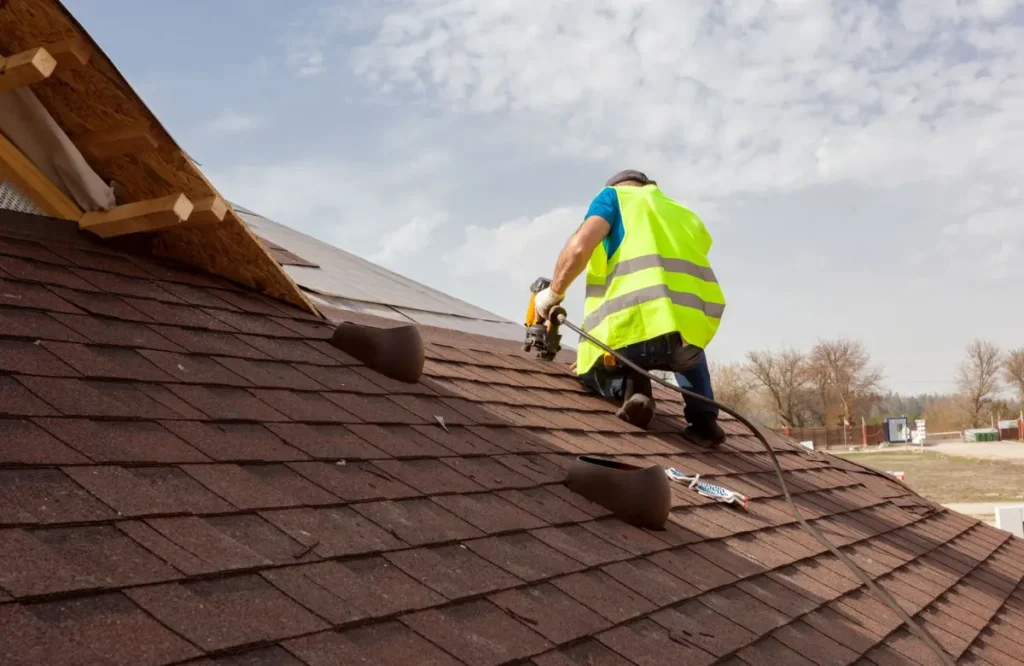
Undoubtedly, the age of a roof affects how durable it is, but there are several other reasons that can lead to the premature failing of roofing. Extreme weather conditions such as storms, as well as hail and high winds, can inflict damage on materials, irrespective of their age.
Furthermore, the lack of installation, poor techniques, and the use of sub-par materials can also lead to an early demise. Professional inspections ensure regular check-ups. This raises the chances of premature failure, and thus offers long-term protection for the home.
Myth 7 – Roof Warranties Cover Everything
The understanding of roof warranties is often misleading. Most warranties will cover a roof for a specific period of time for manufacturing defects and roofers’ workmanship. However, warranties will exclude damages that result from storms, accidents, neglect, and lack of proper maintenance.
Homeowners often mistakenly think that warranties protect against all the problems that could arise with a roof. Warranties do not do that. A homeowner has to maintain and repair the roof for the warranty to stay in effect and in addition to that, claim the roof under warranty remains defended.
Myth 8 – Gutters Have Nothing to Do With Roofing
Many people do not understand that the roof, from which the water drips, is very closely connected with the gutters. They perform the essential function of the eaves, which is to throw water from the roof and away from the building’s foundation. This is done to prevent leaks, wood rot, and other structural damage to the building.
If gutters fail to function, then water can accumulate and may result in the roof leaking, shingles getting damaged, and, in the long run, structural problems with the foundation of the building. This is why a proper roof care programme should be able to maintain the integrity of the home.
How Professional Guidance Protects Your Investment
Your home’s roof is one of the most critical components of the house and the one most damaged in the case of extreme weather. If it is damaged, the weather can expose the inner workings of the home, costing the homeowner valuable time and money. A thorough local assessment of the weather with proper knowledge of materials and extreme weather installation. Experienced contractors can even help gauge what the worth of the home is. Suggested solutions that will prevent expensive roof repairs greatly aid in the assessment of the home.
Having a damaged roof can expose a home to the elements and greatly disrupt the life of the homeowner. Professional services help achieve the value of the home and greatly reduce the stress of the homeowner. That’s why we offer extended warranties.
For roofing services that provide peace of mind and are economical, Faver Roofing comes highly recommended. Our experts offer a free assessment, roofing systems that will help maintain value, a strong peace of mind and a durable roof lasting years.
Conclusion
Roofing myths are prevalent and may easily lead to confusion that influences how owners take care of and maintain roofs. In order to make wise choices aimed at ensuring the integrity and longevity of the roof, fact and fiction should be divorced. Proper inspections, good material selection and regular maintenance can help ensure a long and efficient roofing system can be maintained. It is worthwhile to trust experienced roofing professionals instead of DIY for the most critical parts of your home.
FAQs
Some of the most common signs are missing and curled shingles, roof leaks and sagging. If you notice these in your home, it may be time to replace the roof.
Typically, two layers are the maximum. Additional layers would mean a complete roof replacement.
Asphalt shingles, metals, tiles, and wood shakes are popular materials at varying price points with different longevity.
Flashing is an element of roof construction that comprises a piece of metal put around the joints and vents of the roof to prevent the ingress of water.
Asphalt roofs can last anywhere between 20 and 30 years, metal roofs can last 40 to 70 years, while tiles can last over 50 years.


